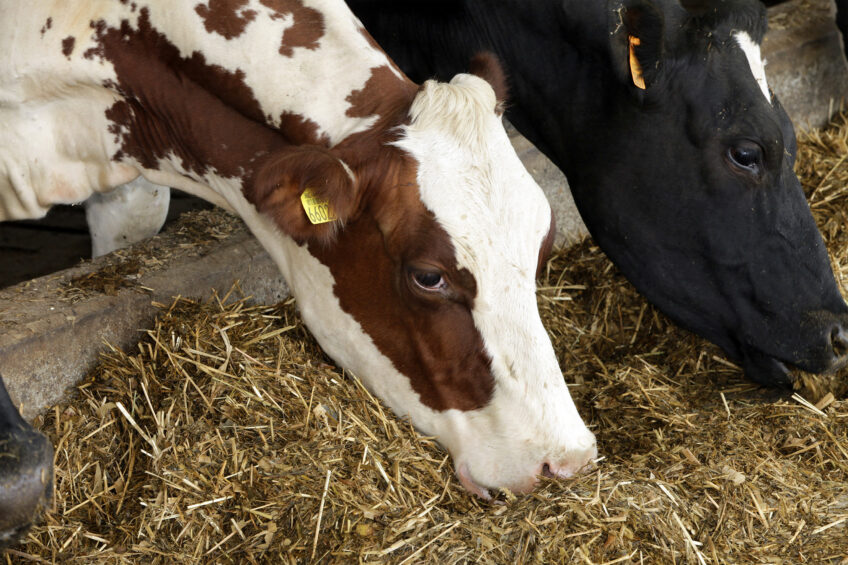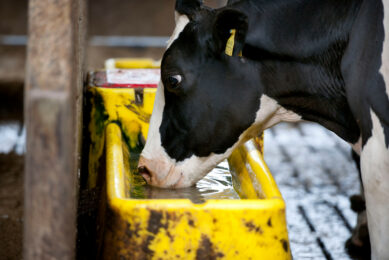Safely unlocking the rumen potential

Since the rumen is one of the most crucial parts in the digestible tract of a cow, it is crucial to keep it healthy. Without a healthy rumen, cows will never reach top production and longevity the farmer aims for.
High milk production levels and high feed efficiencies require a dense ration and will only be achieved if the rumen stays healthy. If we can optimise the rumen health/pH we are able to produce more milk in an efficient and profitable way. Unfortunately cows are often dealing with (sub)acute rumen acidosis with major consequences on production and health of the animals. Rumen acidosis is a metabolic disease appearing as acute rumen acidosis but more often its sub-acute form. In case of acute rumen acidosis, the pH will drop drastically below 4.8 for an extended period of more than 24 hours. An abrupt increased intake of rapidly fermentable carbohydrates will result in a build-up of lactic acid in the rumen. Clinical signs are very clear like complete anorexia, abdominal pain, abnormally fast breathing, rapid heart beating, etc. Fortunately the occurrence of acute rumen acidosis is very low in cattle.

Subacute ruminal acidosis – more frequent and undiagnosed
Subacute ruminal acidosis (SARA) occurs, also undiagnosed, much more frequent in professional dairy farms and is caused by accumulation of volatile fatty acids (VFA) in the rumen. If the production of VFA exceeds the capacity of the rumen absorption, the rumen pH will drop. SARA is characterised by repeating periods of a rumen pH below 5.5, occurring for several minutes to several hours. Especially the long periods of a low pH have a disrupting influence on health and performance of the animals. Sub-optimal fibre digestion, decreased absorption capacity of the ruminal epithelium and, last but not least, a damaged ruminal epithelium are the most important negative effects of SARA. A lot of studies conclude that 19-26% of all dairy cows deals with SARA.
Calculated ≠ consumed
Rumen acidosis, in its acute or subacute form, is mainly caused by an disbalance in the consumed ration. It is important to stress the word consumed, because most of the rations are calculated in a right way. This however doesn’t guarantee that cows also eat what is calculated or that the analyses of the roughages are correct. In sub-optimal circumstances like illness, lameness, heat stress, sorting behaviour, etc, cows will experience deviant consumption patterns. When the feed is not adequately mixed, there will be a risk that cows select at first choice the high grain feedstuffs and lower the intake of roughage.
Negative effects of rumen acidosis
The negative short term effects of rumen acidosis are well-known by many farmers. Although the reduced milk(fat) production is of the most important short term effects, the long term effects can have much more impact. Nutrient absorption capacity will decrease during a period of a low rumen pH and will increase again when the rumen pH is restored. However, after a longer period of low rumen pH the rumen wall can be affected chronically, which will result in a lower absorption capacity for a longer time. Another detrimental effect is the translocation of lipopolysaccharides (LPS) during rumen acidosis. LPS are bacterial endotoxins which induce i.e. inflammation when translocated from the rumen to the interior circulation. During rumen acidosis the concentrations of LPS can be 10-20 times higher than under normal conditions (Li et al, 2012).
Figure 1 – A good buffering profile contains a combination of fast, moderate and slow buffering products.

Nutritional strategy
Most of the high productive cows are limited at intestinal level to increase milk production and efficiency. This means that the biggest plus in production has to come from the rumen. Often, advices is focused on a higher fibre intake. However with a good nutritional strategy it is possible to increase the density of the ration without any negative effects on rumen health. Together with an excellent feeding management, including sorting prevention, a high quality buffering mix will result in a higher efficiency and lower risk on rumen acidosis. In order to reach higher milk production, a combination of an excellent feeding management and buffering product (such as Mervit® Buffer+) will be an important key to success. An excellent buffering profile is required to guarantee an optimal result. In practice, single sodium bicarbonate is often used, having a large buffering capacity but only during a short period of time. Moreover, sodium bicarbonate will also be buffering when it is not necessary with an adverse effect on rumen efficiency as a result. To obtain a good buffering profile over the complete rumen tract it is necessary to have a good combination of fast, moderate and slow buffering products (Figure 1). At the same time, it is important to steer the bacterial population in the good direction. Next to buffering and steering the bacteria population, certain buffering products can also counter the oxidative stress in the animal. Oxidative stress, caused by rumen acidosis and/or heat stress, will increase the amount of free radicals that disrupt the body cells and decrease the barrier functions of the epithelial cells which increase the influx of i.e. endotoxins, pathogens, etc. (Figure 2).
Figure 2 – Oxidative stress causing impaired epithelial barrier function (image source: entry of luminal antigens with disruption of tight junctions, Suzuki, 2013).

In combination with a higher translocation of endotoxins (LPS) caused by ruminal acidosis the risk of diseases will increase significantly. In conclusion, with a good strategy it is possible to unlock the rumen potential safely in order to facilitate the use of energy dense diets, hence increasing milk production.
Join 13,000+ subscribers
Subscribe to our newsletter to stay updated about all the need-to-know content in the dairy sector, two times a week.










